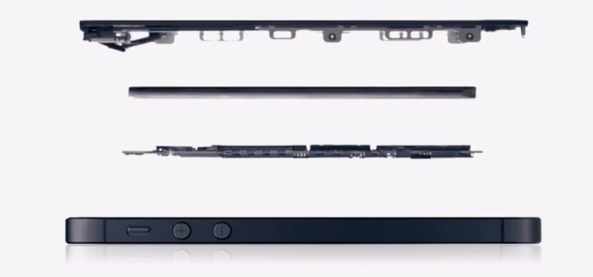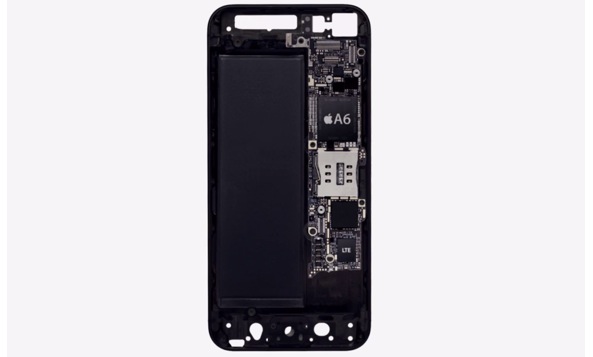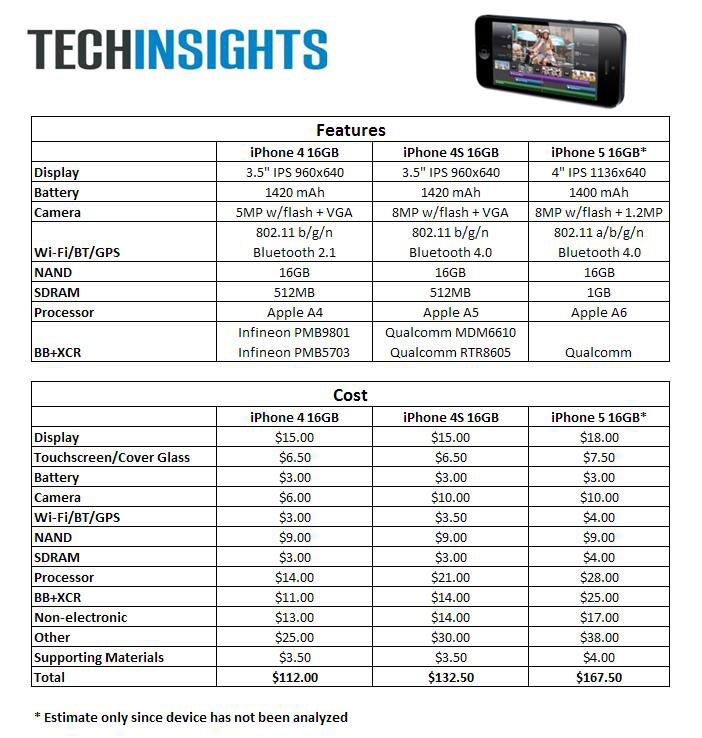Bill of materials for the entry-level 16GB iPhone 5 has been estimated at just $167.50, according to an analysis published Friday by UBM TechInsights. In comparison, UBM TechInsights estimated that the 16GB iPhone 4S has a bill of materials of $132 ($112 for the iPhone 4).
The $36 difference between the iPhone 5 and its predecessor covers new technologies Apple built in, including the larger four-inch Retina screen that leverages the in-cell assembly process, the speedier A6 chip, some new sensors and mics and 4G LTE modem from Qualcomm, to name a few…
According to UBM TechInsights, the priciest component inside the device by far is the new 4G LTE modem from Qualcomm, estimated at $25 a piece. Qualcomm’s package combines both voice and data onto a single chip, helping cut down the iPhone’s thickness and energy consumption while providing more space for other components.
The combined WiFi, Bluetooth and GPS chip costs four bucks, UBM TechInsights estimated.
The four-inch panel is an $18 value and the combined touchscreen and cover glass is an additional $7.50. The thinner iSight camera assembly on the back is pegged at ten bucks. NAND flash storage costs nine bucks (a boon to long-time supplier Hynix) and SDRAM is four bucks.
The new A6 processor is pegged at $28 versus $21/$14 for the A5/A4 chips inside the iPhone 4S/4. The A6 is thought to incorporate ARM’s Cortex-A15 CPU platform and likely four PowerVR SGX543 GPU cores versus two inside the iPhone 4S.
Here’s the full breakdown.
Note this is just an estimate of bill of materials.
We will have to wait until iFixit tears apart the device to get a better understanding of costs to build this iPhone.
Bear in mind that UBM’s estimate excludes costs related to assembly, marketing, research and development, licensees, sales, advertising and more.
And here’s a handy comparison of Apple’s A-series of processors.
The $36 difference doesn’t sound much on paper and it certainly demonstrates the power of Apple’s supply chain expertise and the billions the company pays in advance to secure steady output of parts at the lowest possible prices.
Over time, as the economy of scale kicks in, Apple should be able to reduce the iPhone 5 bill of materials, eventually improving upon its already high iPhone margin.
Thoughts?



